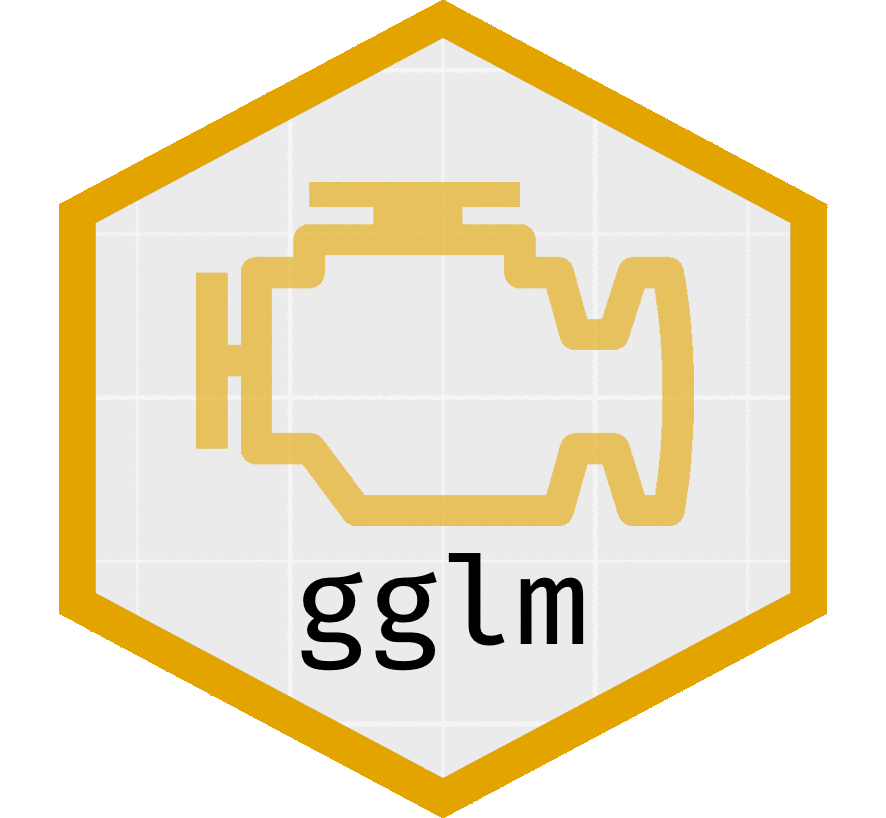https://github.com/graysonwhite/gglm
Grammar of Graphics for Linear Model Diagnostic Plots
https://github.com/graysonwhite/gglm
diagnostic-plots grammar-of-graphics linear-model-diagnostics r
Last synced: 8 months ago
JSON representation
Grammar of Graphics for Linear Model Diagnostic Plots
- Host: GitHub
- URL: https://github.com/graysonwhite/gglm
- Owner: graysonwhite
- Created: 2020-07-28T00:27:57.000Z (over 5 years ago)
- Default Branch: master
- Last Pushed: 2025-03-28T15:13:41.000Z (8 months ago)
- Last Synced: 2025-03-28T16:24:50.917Z (8 months ago)
- Topics: diagnostic-plots, grammar-of-graphics, linear-model-diagnostics, r
- Language: HTML
- Homepage: https://graysonwhite.com/gglm/
- Size: 7.91 MB
- Stars: 81
- Watchers: 4
- Forks: 3
- Open Issues: 2
-
Metadata Files:
- Readme: README.Rmd
Awesome Lists containing this project
- awesome-ggplot2 - gglm
README
---
output: github_document
---
```{r, include = F}
knitr::opts_chunk$set(
fig.path = "man/figures/"
)
```
[](https://cran.r-project.org/package=gglm)
[](https://github.com/graysonwhite/gglm/actions/workflows/R-CMD-check.yaml)
# gglm 
## Overview
`gglm`, The Grammar of Graphics for Linear Model Diagnostics, is an R package and [official `ggplot2` extension](https://exts.ggplot2.tidyverse.org/gallery/) that creates beautiful diagnostic plots using `ggplot2` for a variety of model objects. These diagnostic plots are easy to use and adhere to the Grammar of Graphics. The purpose of this package is to provide a sensible alternative to using the base-R `plot()` function to produce diagnostic plots for model objects. Currently, `gglm` supports all model objects that are supported by `broom::augment()`, `broom.mixed::augment()`, or `ggplot2::fortify()`. For example, objects that are outputted from `stats::lm()`, `lme4::lmer()`, `brms::brm()`, and many other common modeling functions will work with `gglm`. The function `gglm::list_model_classes()` provides a full list of model classes supported by `gglm`.
## Installation
`gglm` can be installed from CRAN:
```{r eval = FALSE}
install.packages("gglm")
```
Or, the developmental version of `gglm` can be installed from GitHub:
```{r eval = FALSE}
devtools::install_github("graysonwhite/gglm")
```
## Examples
`gglm` has two main types of functions. First, the `gglm()` function is used for quickly creating the four main diagnostic plots, and behaves similarly to how `plot()` works on an `lm` type object. Second, the `stat_*()` functions are used to produce diagnostic plots by creating `ggplot2` layers. These layers allow for plotting of particular model diagnostic plots within the `ggplot2` framework.
### Example 1: Quickly creating the four diagnostic plots with `gglm()`
Consider a simple linear model used to predict miles per gallon with weight. We can fit this model with `lm()`, and then diagnose it easily by using `gglm()`.
```{r, message=F}
library(gglm) # Load gglm
model <- lm(mpg ~ wt, data = mtcars) # Fit the simple linear model
gglm(model) # Plot the four main diagnostic plots
```
Now, one may be interested in a more complicated model, such as a mixed model with a varying intercept on `cyl`, fit with the `lme4` package. Luckily, `gglm` accommodates a variety of models and modeling packages, so the diagnostic plots for the mixed model can be created in the same way as they were for the simple linear model.
```{r, message=F}
library(lme4) # Load lme4 to fit the mixed model
mixed_model <- lmer(mpg ~ wt + (1 | cyl), data = mtcars) # Fit the mixed model
gglm(mixed_model) # Plot the four main diagnostic plots.
```
### Example 2: Using the Grammar of Graphics with the `stat_*()` functions
`gglm` also provides functionality to stay within the Grammar of Graphics by providing functions that can be used as `ggplot2` layers. An example of one of these functions is the `stat_fitted_resid()` function. With this function, we can take a closer look at just the fitted vs. residual plot from the mixed model fit in Example 1.
```{r}
ggplot(data = mixed_model) +
stat_fitted_resid()
```
After taking a closer look, we may want to clean up the look of the plot for a presentation or a project. This can be done by adding other layers from `ggplot2` to the plot. Note that any `ggplot2` layers can be added on to any of the `stat_*()` functions provided by `gglm`.
```{r}
ggplot(data = mixed_model) +
stat_fitted_resid(alpha = 1) +
theme_bw() + # add a clean theme
labs(title = "Residual vs fitted values for the mixed model") + # change the title
theme(plot.title = element_text(hjust = 0.5)) # center the title
```
Wow! What a beautiful and production-ready diagnostic plot!
## Functions
### For quick and easy plotting
`gglm()` plots the four default diagnostic plots when supplied a model object (this is similar to `plot.lm()` in the case of an object generated by `lm()`). Note that can `gglm()` take many types of model object classes as its input, and possible model object classes can be seen with `list_model_classes()`
### Following the Grammar of Graphics
`stat_normal_qq()`, `stat_fitted_resid()`, `stat_resid_hist()`, `stat_scale_location()`, `stat_cooks_leverage()`, `stat_cooks_obs()`, and `stat_resid_leverage()` all are `ggplot2` layers used to create individual diagnostic plots. To use these, follow Example 2.
### Other functions
`list_model_classes()` lists the model classes compatible with `gglm`.